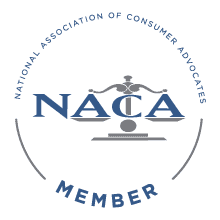Put simply, a charge-off is put in place when you miss too many payments and your account goes unpaid, a creditor may prevent you from making additional charges. Even if a creditor stops trying to collect on your account, you could still be responsible for the debt.
A charge-off is the last resort that creditors take and decide that the debt is a loss for the company. You could potentially end up with an unpaid charge if your account becomes delinquent. This can happen with credit card debts and installment loans like an auto loan, personal loan or student loan.
This does not mean you’re off the hook. Even if your account is listed as a charge-off and the creditor is taking the loss, you’re still responsible for paying back the debt. A charge-off can remain on your credit history and show up on your credit reports for up to seven years from the date your missed payment was reported.
How does a charge-off end up on your credit reports?
Once a creditor writes off your account, it may be reported as a charge-off to the credit bureaus, which translates to a derogatory mark on your reports. The derogatory mark can stay on your reports up to seven years. The creditor may sell your account to a third-party collections agency if the debt was unsecured. If this is the case, your account could appear as an “account in collections” on your reports. When this happens, your credit score may lower and it will become more difficult to qualify for credit or get competitive interest rates.
The Difference Between a Charge-Off, a Write-Off, and a Transfer
A charge-off and a write-off are the same thing: A creditor decides that you are not likely to pay back the debt and prevents you from making additional charges on the account after the account becomes severely delinquent. This may have a negative effect on your credit. However, a transfer can be neutral. This means the original creditor has sold your account or moved it to a different creditor. The account may be transferred in good standing or listed as a charge-off.
How does a charge-off affect your credit?
Before your account was officially a charge-off — you probably missed a number of payments. These missed payments can significantly damage your credit because payment history is a major determining factor on your credit scores. Your scores will most likely suffer further if the account is listed as a charge-off because of the derogatory mark.
If your account is in collections, it may also lower your credit scores. Not paying the collections agency can further damage your credit, because the agency can report missed payments to the credit bureaus.
In positive news: if you show that you use credit responsibly from here forward — such as making on-time payments and being proactive about your debt — then the effects of the derogatory marks on your credit reports can begin to diminish after about 2 years. And, thanks to the Fair Credit Reporting Act, you have the right to have negative information like a charge-off removed from your credit reports after seven years.
Should you pay a charged-off account?
You should first verify that the charge-off account is accurate. If there is a charge-off account on your credit reports, you should verify all of the information.
Make sure to look at these things:
Your account may be sold a few times through third-party collections agencies. Make sure each sold account is marked “closed” and has a zero balance. Only the most current collections account should be listed as open.
Check the outstanding balance. If it’s more than you think it should be, ask the creditor to explain any additional costs or make the correction.
Verify the charge-off date on the original account as well as any offspring accounts in collections. The charge-off date should be the date of your first delinquent payment on the original account.
Is the charge-off is legitimate
If you find that the charge-off is legitimate, it is important that you take action to pay it off. It may be tempting to to not pay the charge-off, since the lender has likely stopped trying to collect on the account. But as long as the debt is yours, you’re legally responsible for it until it is paid, settled, or discharged in a bankruptcy filing. Plus, the charge-off can ruin your chances of getting a loan. Some lenders require that you pay all outstanding debt before you take out a mortgage or other types of loans.
If the charge-off is an error
Don’t pay the charge-off if you find that it was made in an error. If it was an error or if it isn’t removed from your reports after 7 years, you can file a dispute. TransUnion, Equifax, and Experian have a dispute option and are required to review them within 30 days. However, it is best to write a letter and send the dispute by certified mail. This method removes the computer generated checking and lets you know that a real person has investigated your information.
How to pay charged-off accounts
If the debt hasn’t been sold to a collection agency, you can work with the original lender to make payment arrangements. Once it is paid off, the lender will change the status of the account to “paid charge-off” and update the balance to 0. Lenders usually see a paid charge-off as more favorable than an unpaid debt.
If you decide to negotiate a settlement and either the original lender or collection agency accepts less money than originally agreed, keep this in mind: It should appear on your credit reports as a “settled” charge-off. This could negatively impact your credit scores, but the account won’t be sent to collections.
If the creditor sold the account to a collections agency, the you would pay the agency. Before you do, write to the agency and ask for proof that it owns the account. After you have paid off the debt, the account will appear on your reports as “paid collection”, which is more favorably viewed by lenders than an unpaid account.
Once you have paid off the debt, through the original creditor or the collections agency, or via a settlement, make sure you ask for a final payment letter. You should also keep tabs on your credit reports. If the account isn’t shown as paid, you will have the letter as proof that you can use to help get your credit reports corrected.
Removing a Charge-Off
If the charge-off listed on your credit reports is legitimate, there is not much you can do to remove it. You can try negotiating with the original lender. If the account hasn’t been sold, you can offer to pay the debt in full exchange for the charge-off note to be removed from your reports .
Some debt collectors may offer to remove the charge-off note from your credit reports — this is sometimes knows as a “pay for delete” offer. It is important to note that lenders are required to report accurate and complete information, so any “pay for delete” service is unlikely to be successful. Otherwise, a charge-off should be removed automatically from your credit report after 7 years.
Final Steps
Once you have taken care of the charge-off, you should take healthy credit steps to improve your credit. There are credit counseling services that help you make a budget and avoid delinquent payments in the future.
If you have found an error on your credit report and investigations have failed. Contact us for help.










